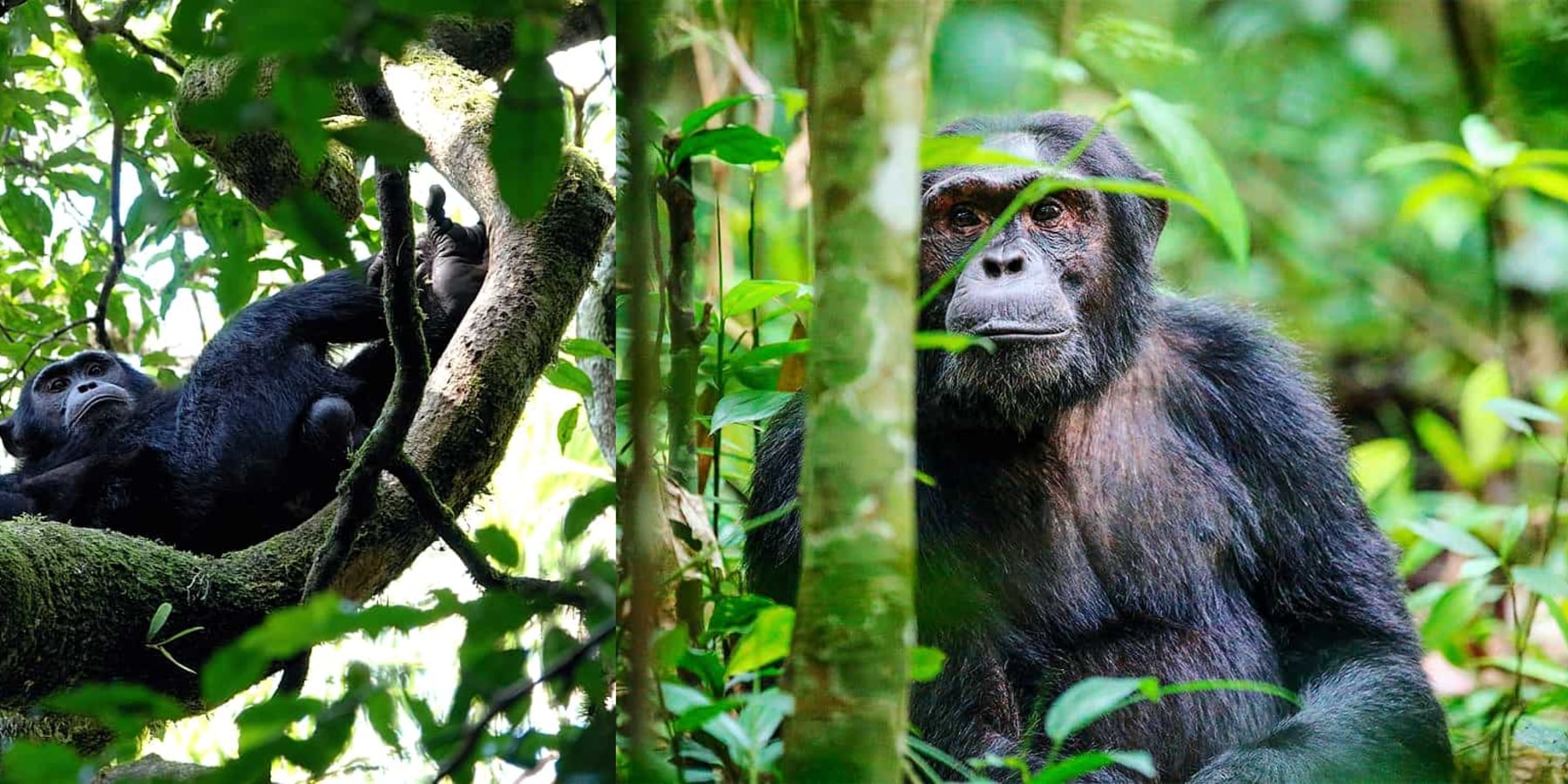
Located in western Uganda, Kibale Forest National Park is a lush tropical rainforest renowned for its incredible biodiversity, particularly its population of primates. Covering approximately 795 square kilometrers, Kibale offers visitors the unique opportunity to explore dense jungle, encounter a variety of wildlife, and immerse themselves in nature. Known as the “Primate Capital of the World,” the park is home to 13 primate species, including a significant population of chimpanzees.
1. Key Highlights of Kibale Forest National Park
Chimpanzee Tracking: One of the best places in the world to observe chimpanzees in their natural habitat.
Primate Diversity: Hosts 13 primate species, including colobus monkeys, L’Hoest’s monkeys, and olive baboons.
Rich Biodiversity: Features over 70 mammal species, 375 bird species, and countless butterflies.
Scenic Crater Lakes: The surrounding area is dotted with picturesque crater lakes.
Community Engagement: Local communities actively participate in conservation and tourism.
2. Wildlife in Kibale Forest
2.1 Primates
Chimpanzees: The park’s star attraction, with an estimated population of over 1,500 individuals.
Other Primates:
Black-and-white colobus monkeys.
Red-tailed monkeys.
Blue monkeys.
Grey-cheeked mangabeys.
Bush babies (nocturnal species).
2.2 Mammals
Forest elephants, bush pigs, and giant forest hogs roam the park.
Smaller mammals like duikers and civets can also be spotted.
2.3 Birds
Kibale is a birding hotspot, with notable species such as:
African pitta.
Green-breasted pitta.
Great blue turaco.
Black bee-eater.
3. Chimpanzee Tracking in Kibale Forest
3.1 What to Expect
Guided treks through the dense forest to locate and observe habituated chimpanzee groups.
Duration: Typically lasts 2–4 hours, with one hour spent observing the chimpanzees.
Experience: Listen to their loud vocalizations and watch their behaviour up close.
3.2 Chimpanzee Habituation Experience
A full-day activity allowing visitors to spend extended time with researchers and chimpanzees during their habituation process.
Ideal For: Enthusiasts who want a deeper understanding of chimpanzee behaviour.
3.3 Permits
Tracking Permit Cost: $250 (as of 2025).
Permits should be booked in advance, especially during the peak season.
4. Other Activities in Kibale Forest National Park
4.1 Bird Watching
A prime birding destination, especially for the elusive green-breasted pitta.
Best explored on foot with experienced guides.
4.2 Nature Walks
Explore the forest trails and learn about its diverse flora and fauna.
Bigodi Wetlands Sanctuary: A community-run wetland offering birding, primate sightings, and guided walks.
4.3 Nocturnal Forest Walks
Evening walks to spot bush babies, potto, and other nocturnal creatures.
4.4 Crater Lakes Exploration
Visit nearby crater lakes for scenic views, hiking, and photography.
4.5 Cultural Encounters
Engage with local communities, learn traditional crafts, and participate in cultural performances.
5. Accommodation Options in Kibale
Luxury Lodges
Kyaninga Lodge: Overlooks a stunning crater lake with luxury cottages.
Ndali Lodge: Offers panoramic views of the Rwenzori Mountains and the crater lakes.
Mid-Range Options
Primate Lodge Kibale: Located within the park, perfect for chimpanzee tracking.
Turaco Treetops: A charming lodge with forest views.
Budget-Friendly
Chimpanzee Guest House: Affordable and conveniently located near the park.
Kibale Forest Camp: Offers budget tents and bandas amidst nature.
6. Best Time to Visit
Dry Season (June–September, December–February):
Ideal for chimpanzee tracking and forest hikes due to less rainfall and easier trails.
Wet Season (March–May, October–November):
Lush landscapes and excellent birdwatching opportunities.
Trails can be muddy, but wildlife sightings remain rewarding.
7. Conservation and Community Efforts
Kibale Forest National Park is managed by the Uganda Wildlife Authority (UWA), with initiatives to:
Protect primate populations through anti-poaching measures.
Engage local communities in eco-tourism and conservation.
Promote sustainable practices and habitat restoration.
The Bigodi Wetlands Sanctuary, run by the community, exemplifies the park’s successful integration of conservation and community development.
8. Travel Tips for Kibale Forest
Book Permits Early: Chimpanzee tracking permits are limited and in high demand.
Dress Appropriately: Wear sturdy hiking boots, long pants, and a rain jacket.
Carry Essentials: Bring water, insect repellent, and a camera.
Stay Fit: Some trails can be steep and challenging.
Hire a Guide: Guides enhance the experience with their knowledge of the forest and wildlife.

